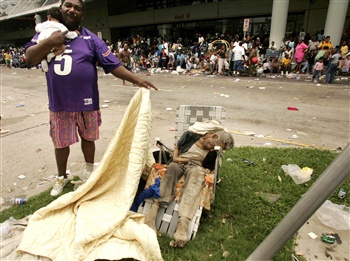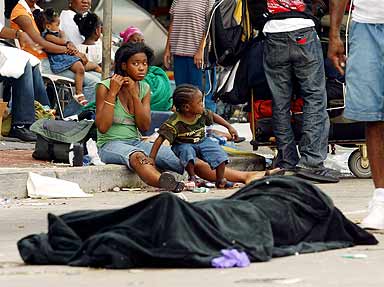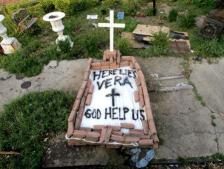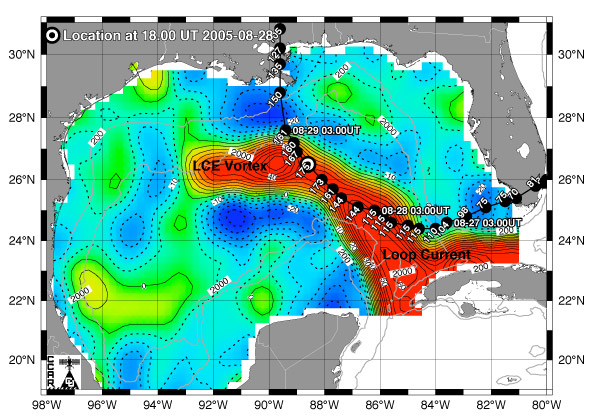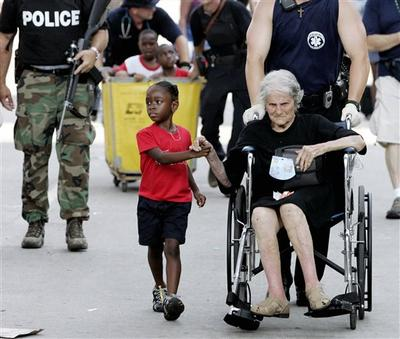 |
Mama Nita's Story
Tina LaGarde, an 89-year-old survivor is shown holding the hand of 5-year-old
Tanisha Belvin as she is moved from the Convention Center.
"Mama Nita" had fled the Ninth Ward during the storm. As the floodwater
rose and as the winds continued to rage, she had been carried in neck-deep water
to a neighbor's two-story house. When it seemed the house would be
inundated, they climbed into the attic. As the waters continued to rise, a
hole was punched through a rotted area of the ceiling and everyone climbed onto
the roof. Fearful they would become separated in the storm, Tanisha's
grandmother had lashed her and "Mama Nita" together with an orange extension
cord.
When the storm finally passed, neighbors in a canoe rescued them from the roof
and left them at a bridge with others from their neighborhood. They stayed
there for two days and nights, sleeping on the concrete and eating what food
could be found in abandoned stores.
A helicopter finally came and took them to Interstate 10 where they again
waited. The elderly woman became severely sunburned and badly dehydrated.
Police, promising air conditioning and fresh water, loaded them into a
truck which dropped them at the convention center with the other suffering
masses. It was nearly four days before they would be evacuated safely to
Houston. |
